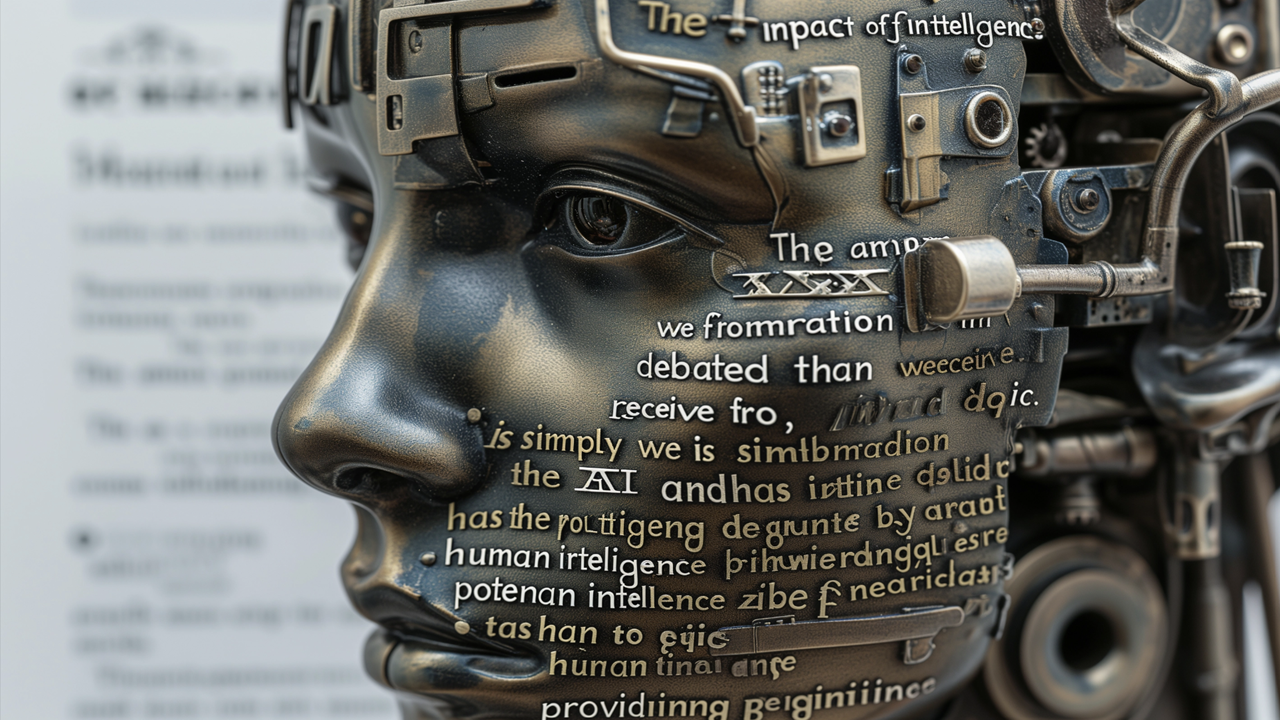Natural Language Processing (NLP): Beyond Translation - Understanding Context and Emotion
Natural Language Processing (NLP) transcends mere translation, venturing into the nuanced realms of context and emotion understanding. This article delves into how NLP technologies are breaking new ground, enabling machines to interpret human language with an unprecedented depth of understanding, thereby reshaping our interaction with technology.

In the vast and intricate landscape of human communication, words carry not just information, but the weight of context and the hues of emotion. Natural Language Processing (NLP), a field at the confluence of artificial intelligence (AI), linguistics, and computer science, has long been associated with the task of translating text from one language to another. However, the true potential of NLP stretches far beyond translation, into the realms of understanding context and deciphering emotions, thereby bridging the chasm between human and machine communication.
The Evolution of NLP: From Syntax to Sentiment
The journey of NLP began with the challenge of teaching machines to understand human language as more than just strings of text. Early endeavors focused on syntax and grammar, enabling basic translation and keyword-based searches. Yet, as technology advanced, so did the ambitions of NLP researchers. The advent of machine learning and deep learning opened new vistas for NLP, allowing for the development of algorithms that could grasp the subtleties of language, including its context and emotional undertones.
Understanding Context: The Key to Meaning
The context in language is like the air we breathe — invisible yet vital. It shapes the meaning of words, guiding their interpretation in myriad ways. NLP technologies now employ sophisticated models to understand context, using vast amounts of data and complex algorithms to discern the intended meaning behind words. This is particularly crucial in tasks such as text summarization, question answering, and information extraction, where the relevance and accuracy of the response depend heavily on the system's ability to grasp the context in which words are used.
One of the groundbreaking approaches in this area is the development of transformer-based models like BERT (Bidirectional Encoder Representations from Transformers) and GPT (Generative Pre-trained Transformer). These models analyze text in a way that considers the full context of a word by looking at the words that come before and after it, radically enhancing the system's understanding of language nuances.
Emotion Analysis: Deciphering the Heartbeat of Text
Beyond context, NLP is venturing into the domain of emotion analysis or sentiment analysis. This involves detecting and interpreting the emotional tone behind words, a task that mirrors the human ability to perceive feelings from speech or text. Emotion analysis has vast applications, from monitoring social media sentiment to tailoring customer service responses and personalizing content delivery.
By analyzing the language used in product reviews, social media posts, or customer feedback, NLP systems can identify positive, negative, and neutral sentiments, as well as a range of emotions such as joy, anger, sadness, and surprise. This not only helps businesses understand customer sentiment but also opens up new avenues for empathetic human-machine interactions.
Challenges and Ethical Considerations
Despite these advancements, NLP faces significant challenges, especially when it comes to understanding context and emotion. The subtlety of sarcasm, irony, and humor often eludes even the most advanced NLP systems, leading to misinterpretations. Additionally, the cultural and linguistic diversity of human language adds layers of complexity to the task of understanding context and emotion accurately.
Moreover, as NLP technologies become more embedded in our daily lives, ethical considerations come to the forefront. Issues of privacy, consent, and bias in language models are critical concerns that need to be addressed to ensure that NLP technologies are used responsibly and for the benefit of all.
The Future of NLP: A More Human Technology
As we look to the future, the trajectory of NLP points towards an even greater integration of context and emotional understanding. The development of more sophisticated models, coupled with advancements in AI and machine learning, promises to further narrow the gap between human and machine communication.
One exciting frontier is the development of conversational AI that can engage in truly natural dialogues, understanding not just the words but the intent and emotions behind them. Such technologies have the potential to revolutionize customer service, mental health support, and educational tools, making technology more accessible, responsive, and human.
Conclusion: The Language of Machines, The Heart of Humanity
Natural Language Processing stands at a fascinating crossroads, where the pursuit of technological advancement meets the essence of human communication. By venturing beyond translation to understand context and emotion, NLP is not just transforming how we interact with machines; it is redefining the boundaries of what machines can understand and how they can connect with us on a more human level. In this journey, NLP embodies the aspiration to create technology that understands not just the words we say but the meaning and feelings behind them, bringing us closer to a world where machines can truly comprehend the soul of words.
ALSO READ
Haiti decrees long-awaited transition council, but questions remain
US welcomes establishment of Transitional Presidential Council in Haiti
US lawmakers angry after Huawei unveils laptop with new Intel AI chip
"The answer to terrorists cannot have any rules": EAM Jaishankar reaffirms muscular response to cross-border terrorism
Mumbai: Landslide sets off panic in Ghatkopar (W), no injuries reported










